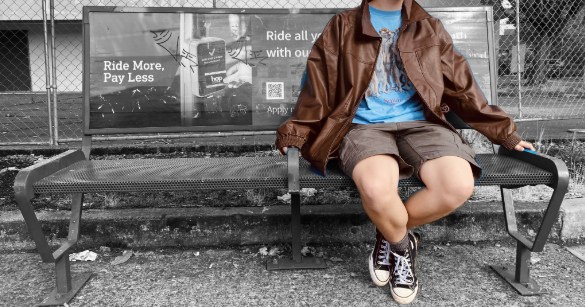
Community, the popular tv show, portrays community college as a chaotic and corrupt place where no actual learning happens. For example, course offerings include: ladders, when it’s ok to shake a baby, baby talk, and advanced breath holding. While this show is very over the top, a common concern about community college is that it is not a place where people who are interested in learning go. In fact, though, community colleges offer programs to prepare students for admission to 4-year colleges and programs to directly prepare students to join the workforce.
Not only is community college a place of real learning, it is also much more accessible and affordable than other educational institutions. In Oregon, we are lucky to have 17 different community colleges all across the state, including three very close by: Portland Community College (PCC), Clackamas Community College (CCC) in Oregon City, and Mt. Hood Community College in Gresham. When deciding what to do after high school, I encourage you to consider the benefits of community college before making your decision.
Amanda Coffey teaches writing at Clackamas Community College and has worked there for over 20 years. One of her favorite things about being at a community college is the attention to teaching over research. “At big universities, college professors often have a responsibility for research and publication, which is an important piece of their academic work, but it divides their time and attention between the classroom and their own academic profession,” she said.
The approach is very different at community colleges. Instructors have the option to publish research or creative works, but it is not required. “All of my professional development time is spent on becoming a better teacher,” Coffey said.
Community colleges tend to be more diverse than 4-year colleges. There are high schoolers taking supplemental college classes, people right out of high school going to college for the first time, adults pursuing an additional degree, and grandparents taking a class for fun. There is diversity of political beliefs, race, age, socioeconomic status, and so much more. Coffey has even had a parent and their child in the same class multiple times! In so many ways, community colleges are less homogenous than 4-year colleges. Coffey said the diversity “makes for a dynamic, extraordinary teaching experience.”
Even though community college instructors are less likely to be well known or leaders in their field, this doesn’t mean they aren’t as good at teaching. Coffey said, “Your teacher could be a brilliant individual but a horrible teacher.”
“And the opposite could be true. You could have a teacher who doesn’t know as much or have the same level of degree as somebody at a private school, but is such an impassioned, fabulous teacher that the smaller, narrower range of what they teach comes alive for every single student who takes those classes,” Coffey said.
You’ve probably heard many times that community college is more affordable than 4-year colleges. Let’s look at the numbers. At PCC, full time tuition costs 4,809 dollars per year (or up to 7,575 if you take many additional classes).
Instate tuition at the University of Oregon, on the other hand, is 13,857 dollars for the 2020-21 school year. And the average tuition at private colleges towers over those figures, at an average of 35,830 dollars for the 2018-19 school year. It’s obvious that community college is a far more affordable price than other educational institutions. Additionally, the Oregon Promise Scholarship is available to those graduating high school with over a 2.50 GPA, and further reduces the cost of an education at a community college.
Class sizes at community colleges are much smaller than at state colleges, especially for prerequisite courses. For example, at Oregon State University multiple lecture halls seat 300 students. For reference, Coffey’s classes in the writing department at CCC cap at 27 students, or 23 for online classes. Even for classes like Writing 101, that all freshmen are required to take, classes remain small. Smaller class sizes mean more individual attention and opportunities for growth. And the teacher is much more likely to know your name.
Dental assisting, medical assisting, addiction studies, manual trades apprenticeship, and sustainable design: these are all certificate programs offered by PCC that take a year or less to complete. These and many others prepare people to go straight into the workforce.
In my opinion, the biggest drawback to community colleges is that they don’t offer housing on campus. As commuter campuses, not residential campuses, they provide a different experience. This won’t be a fit for everybody. However, they do have extracurriculars like sports, student government, student newspapers, and many more.
Tearale Triplett, one of our FHS counselors, sums it up best: “For those who are unsure of what their path looks like after high school, it’s a great opportunity because it provides you the flexibility to explore without being penalized financially.”

































